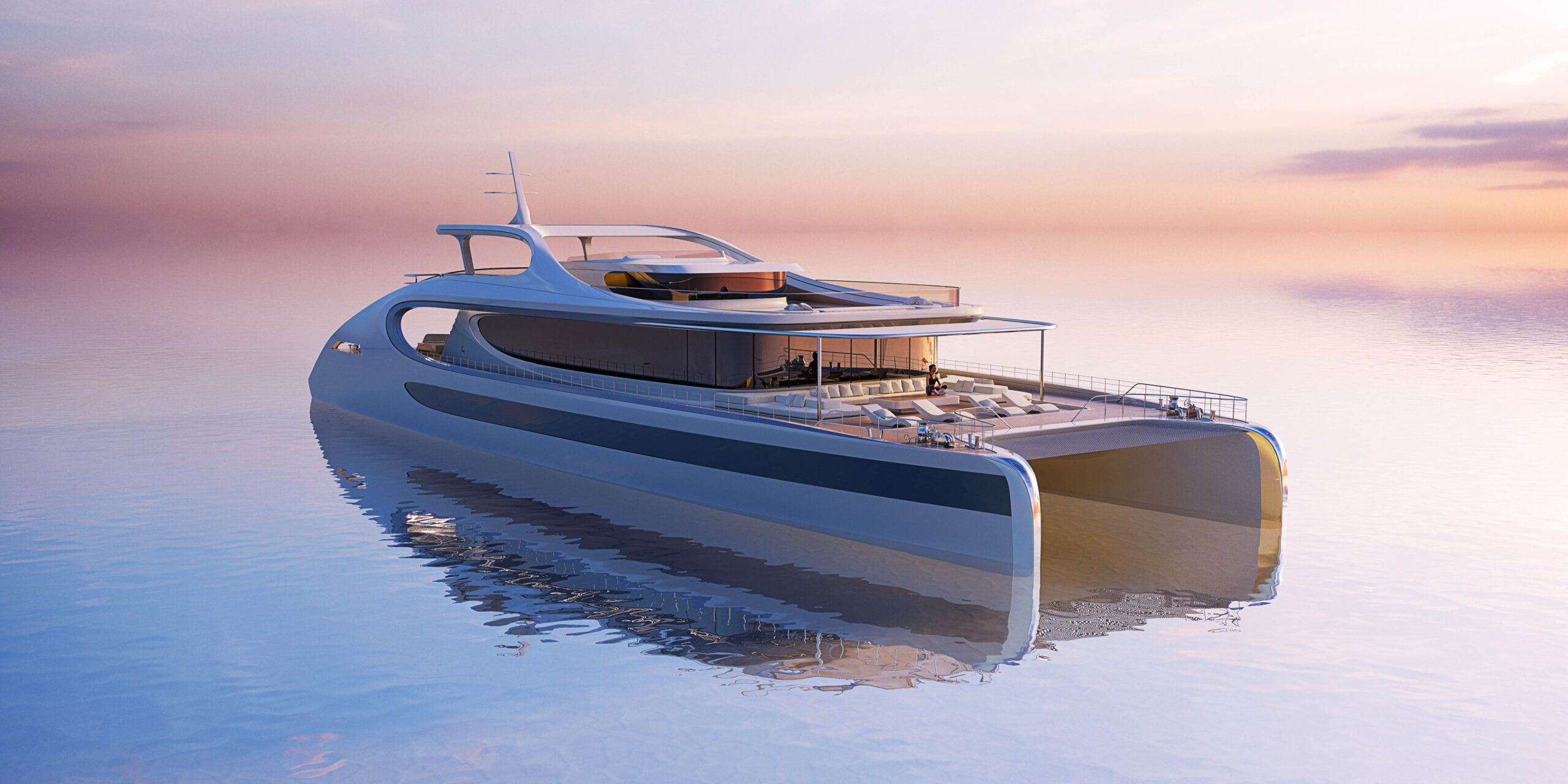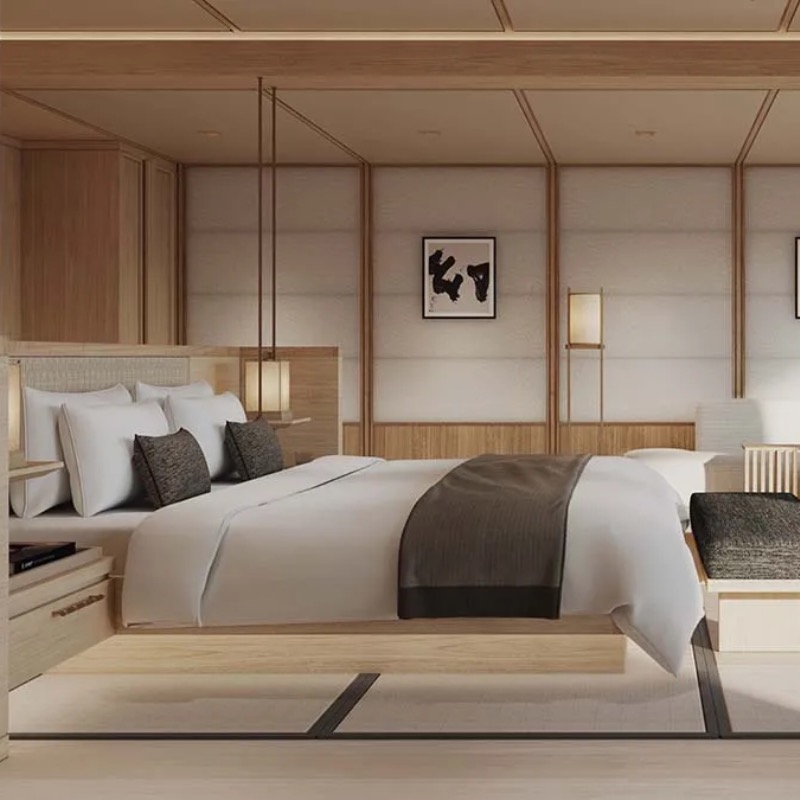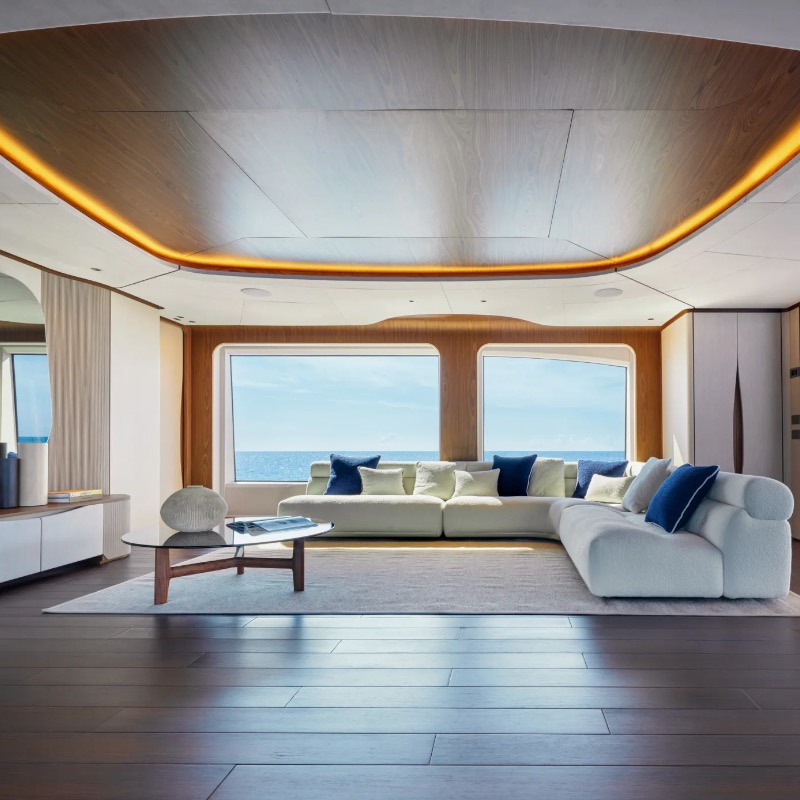When it comes to “green” yachts, electric vessels are no longer a new commodity or a new concept in the vessel market. Many come in a diesel-electric hybrid setting so they still cruise easily when you run out of battery. In fact, yachts don’t have to stick to the same configuration to be considered “green.” Today, emerging renewable energy is starting to play a role in making the yacht industry become more sustainable, without compromising on comfort or luxury.
Biofuel: Futura
Biofuels are an emerging type of renewable energy that has captured the attention of the industry. Unveiled by Dutch shipyard Vripack, Futura is a 66-metre-long diesel-electric hybrid with a difference—it is designed to run on biofuels made from food waste. Equipped with bio-based batteries made from salt, sand, water, and plants, the battery bank—charged by an enormous kite on an electric winch that can be released at the touch of a button—is 100 percent biodegradable too. This power system allows Futura to cruise comfortably at 12 knots, while the maximum speed it can reach is 16 knots.
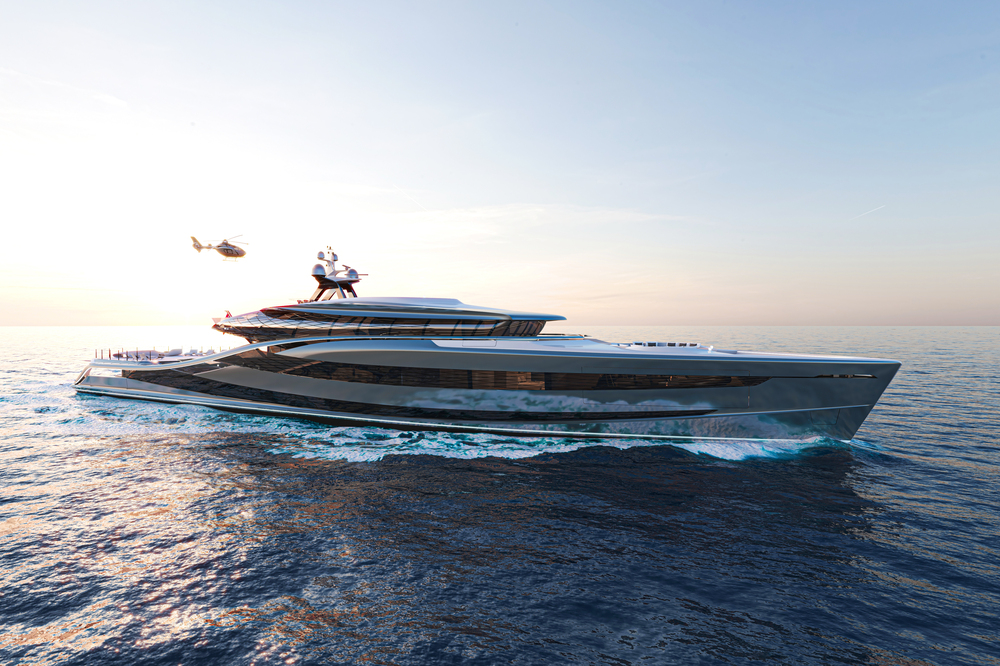
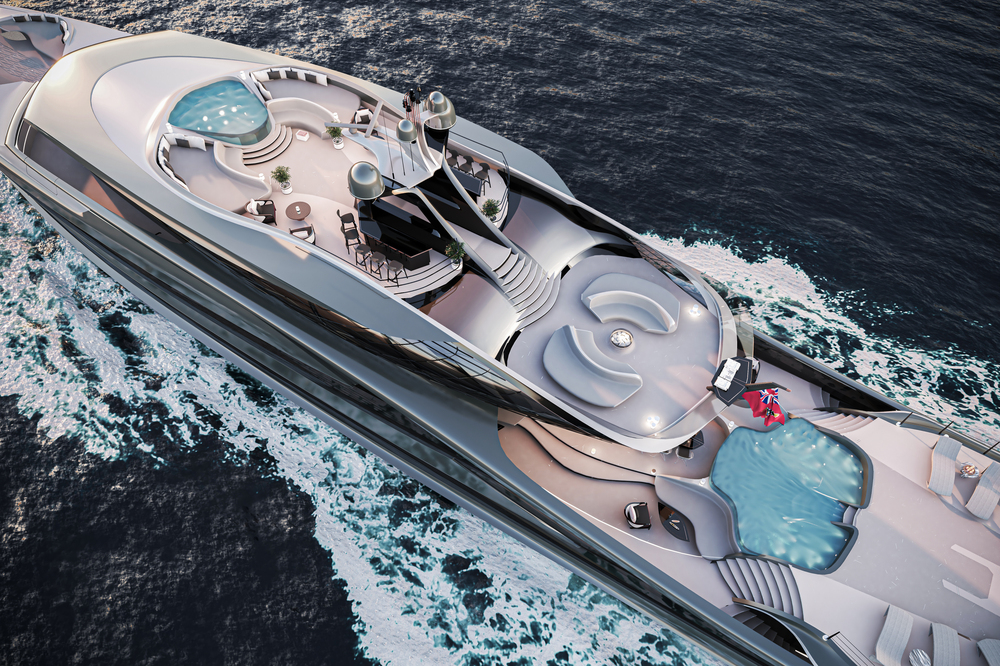
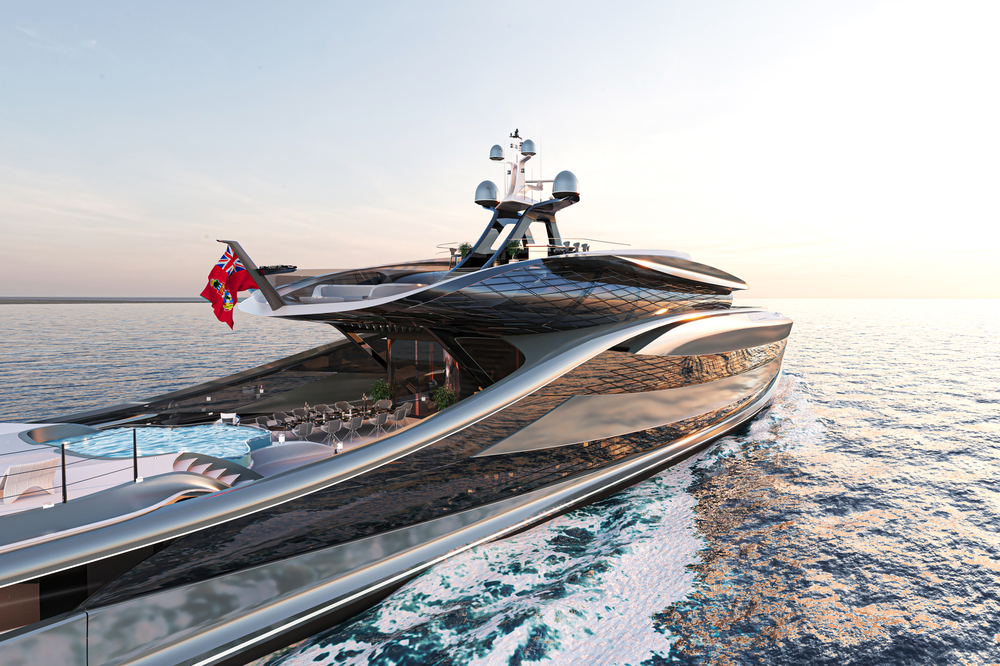
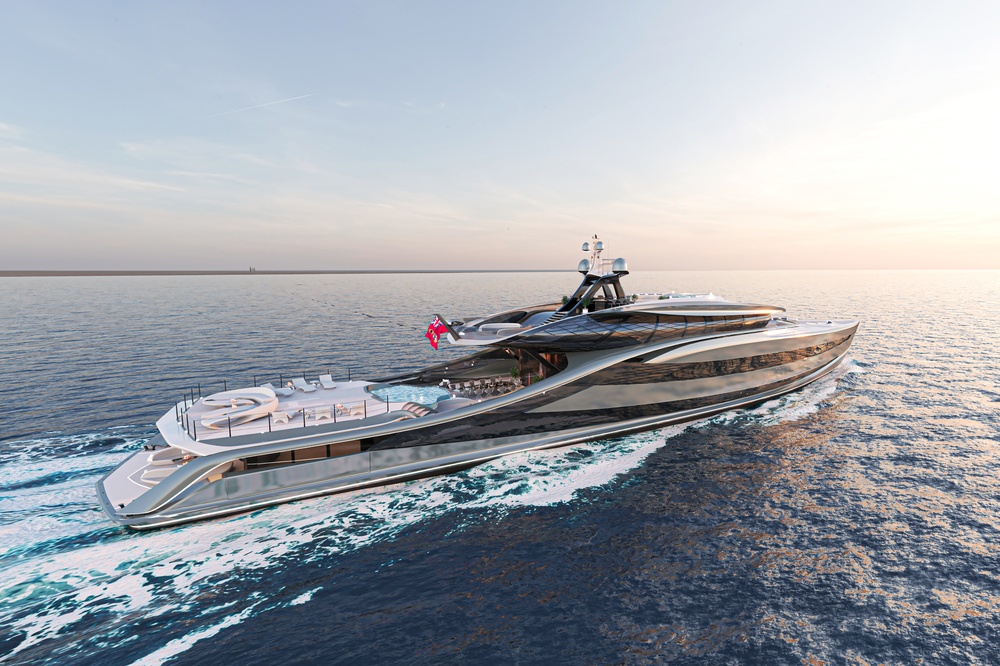
The vessel has a cocoon-like glass superstructure with a streamlined bow and a rounded middle, resembling the silhouette of a whale. It also features rhombus-shaped framing similar to fish scales, which makes it exceptionally lightweight. Designed as a “split and merge” concept, it goes beyond a conventional deck setup, featuring a loft-style, split-mezzanine configuration that interconnects. A long dining table that seats 20 and the DJ booth on the upper deck observation area are some of the highlights of the onboard amenities.
All images courtesy of Vripack.
Solar power: Oneiric
This should surprise no one; the sun is a reliable source of energy for yachts while they are sailing the seven seas. Unveiled by Italian shipyard Rossinavi in June last year, the solar-powered Oneiric is a 44-metre catamaran concept designed by renowned Zaha Hadid Architects (ZHA), whose recent works include the BEEAH Group headquarters in Sharjah, UAE, and Beijing Daxing International Airport (that began operations in 2019).
Like ZHA’s previous works, the yacht is recognised for its dynamic curves. The design inspiration comes from the fluidity and undulation of ocean waves, which is reflected in the sinuous lines and reflective surfaces of the vessel’s exterior that continues organically throughout the interior.
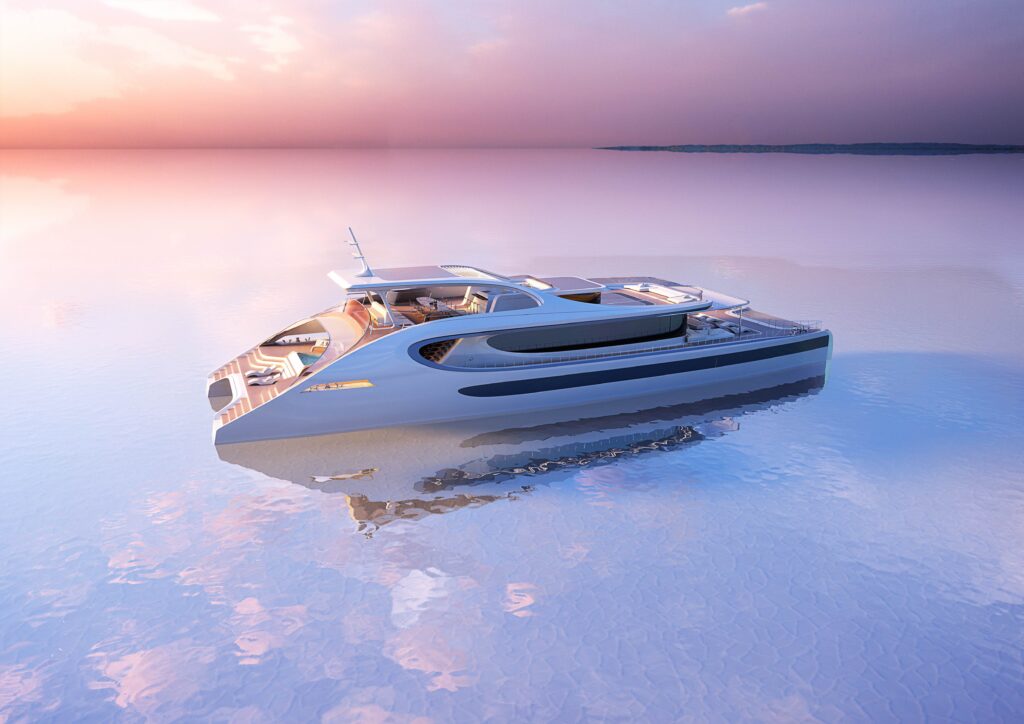
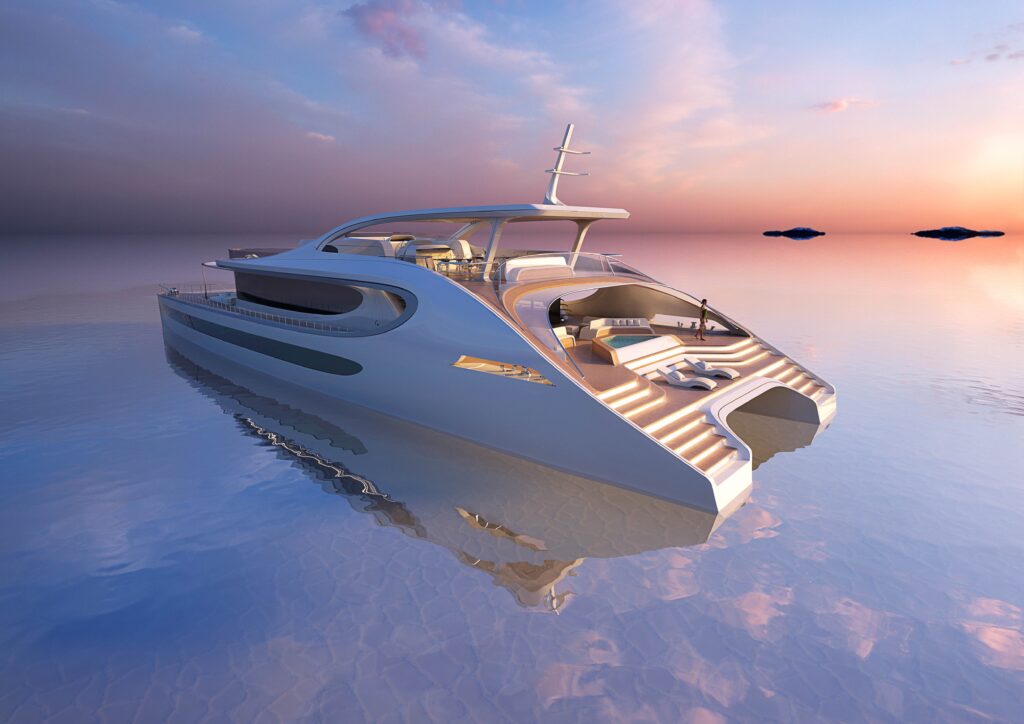
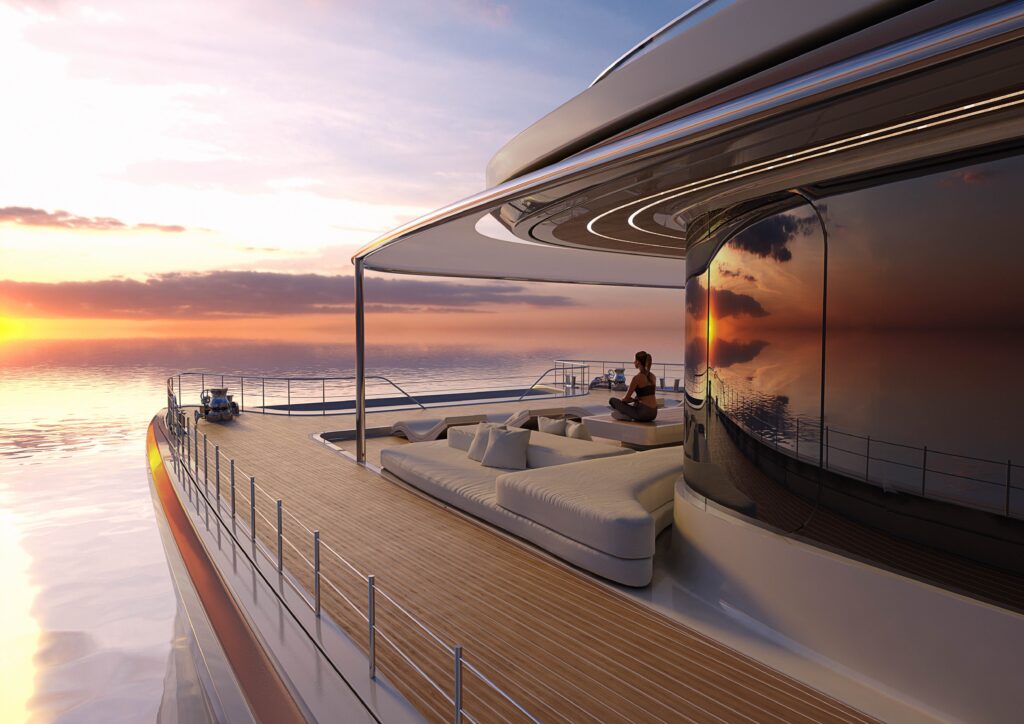

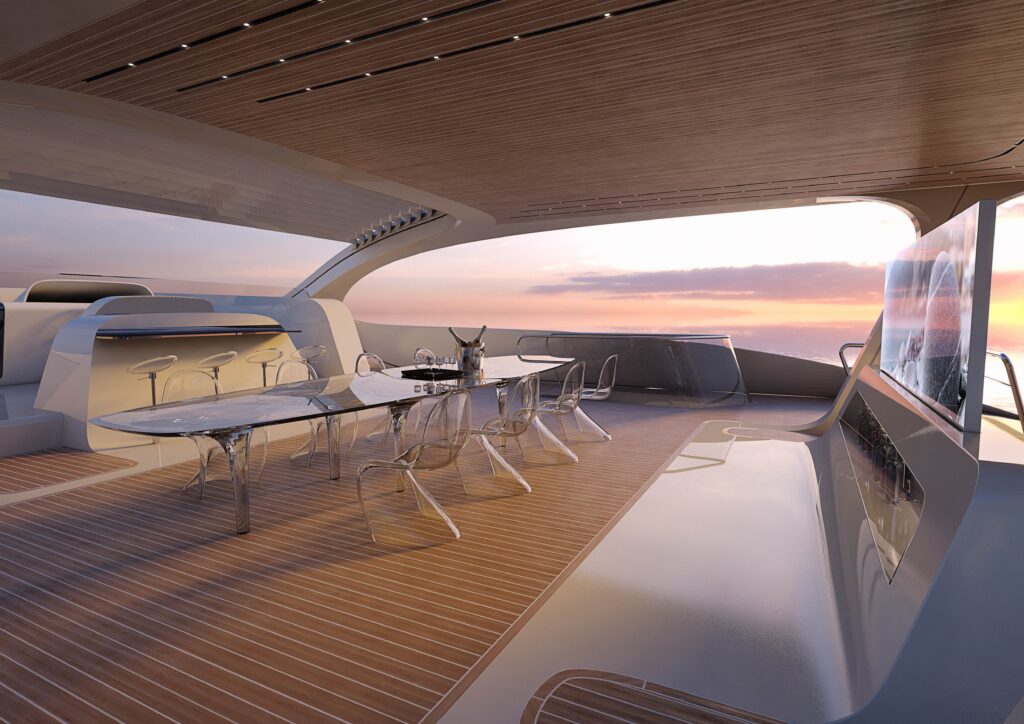
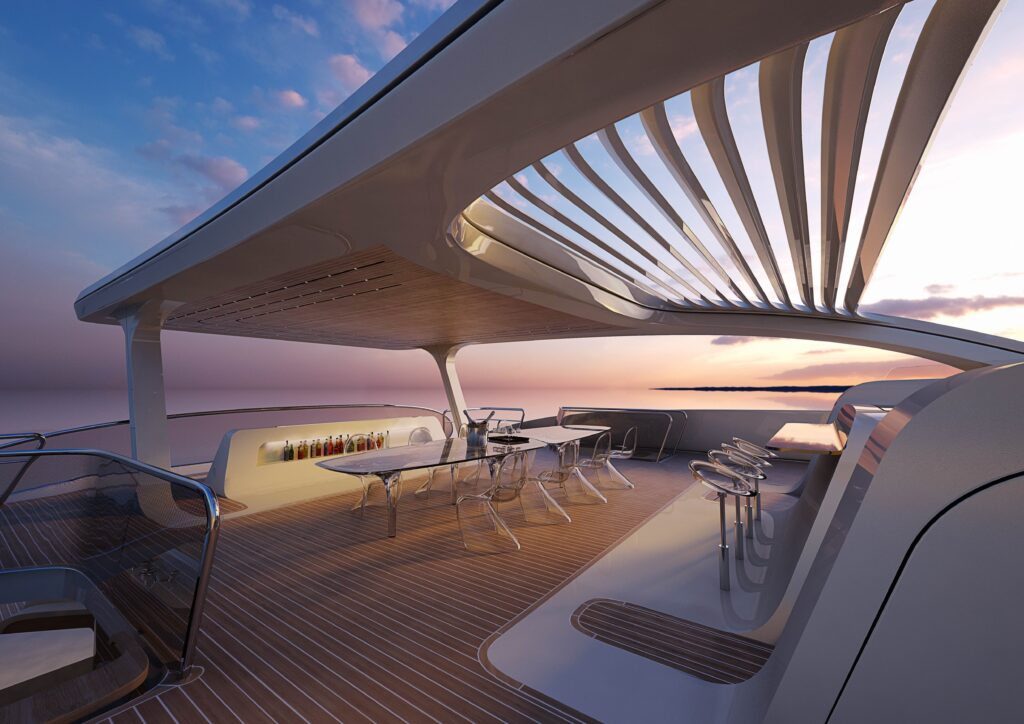
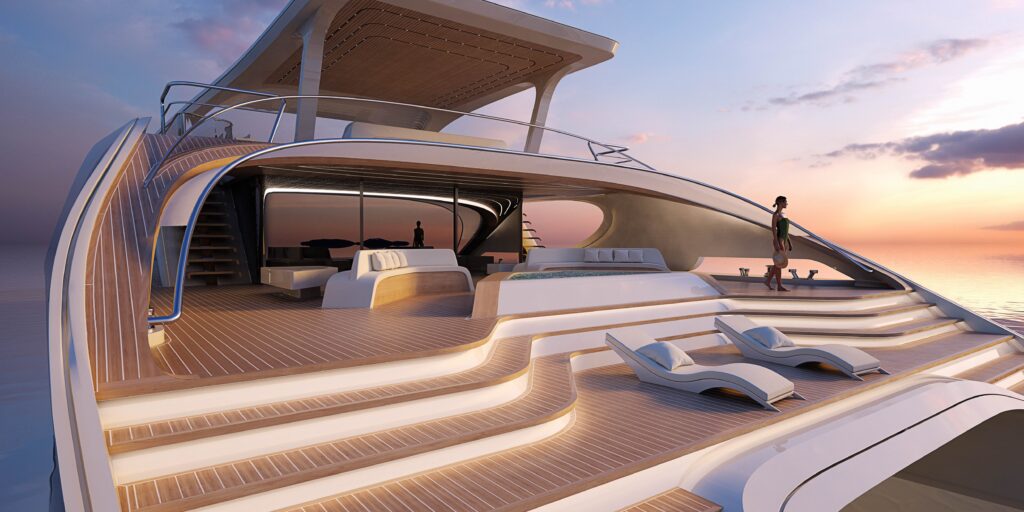
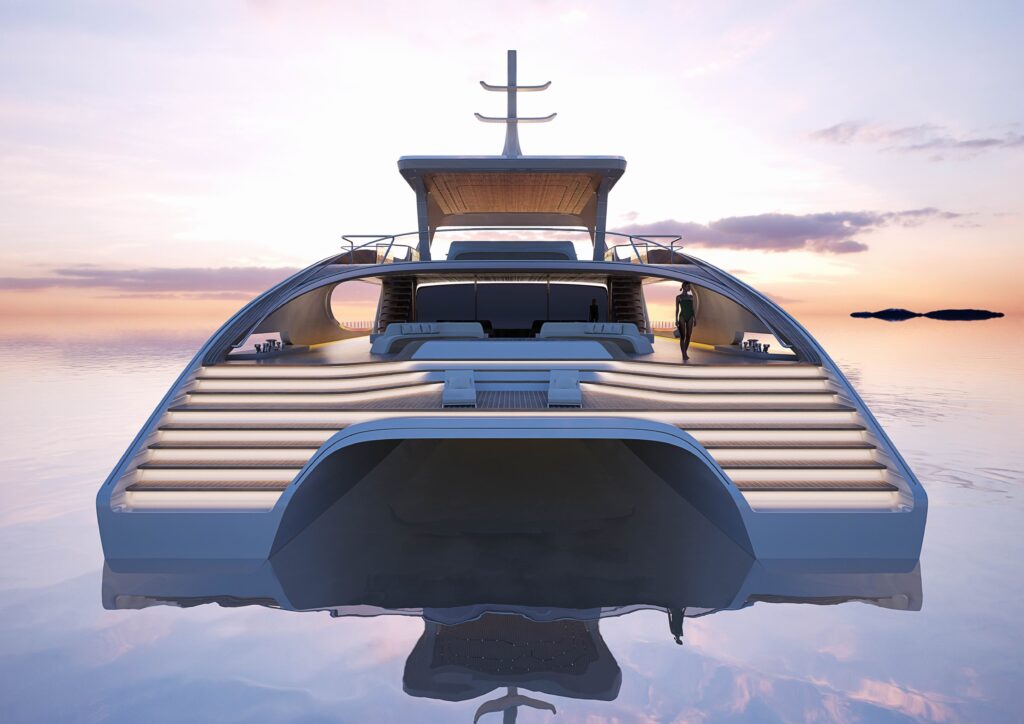
The spaces onboard are fluidly interconnected, too. Notably, the Owner’s Suite features a 180-degree view with a composition of skylights, and provides access to the forward outdoor lounge area. The main deck cockpit is composed of a patio where walls and ceiling are slightly curved to create a continuity that opens the views to the water. The swim platform area is even more open as the lack of walls and ceiling create a direct connection with the sea. Other onboard facilities include a media room with the latest entertainment technology, four guest cabins, and multiple lounge and dining areas.

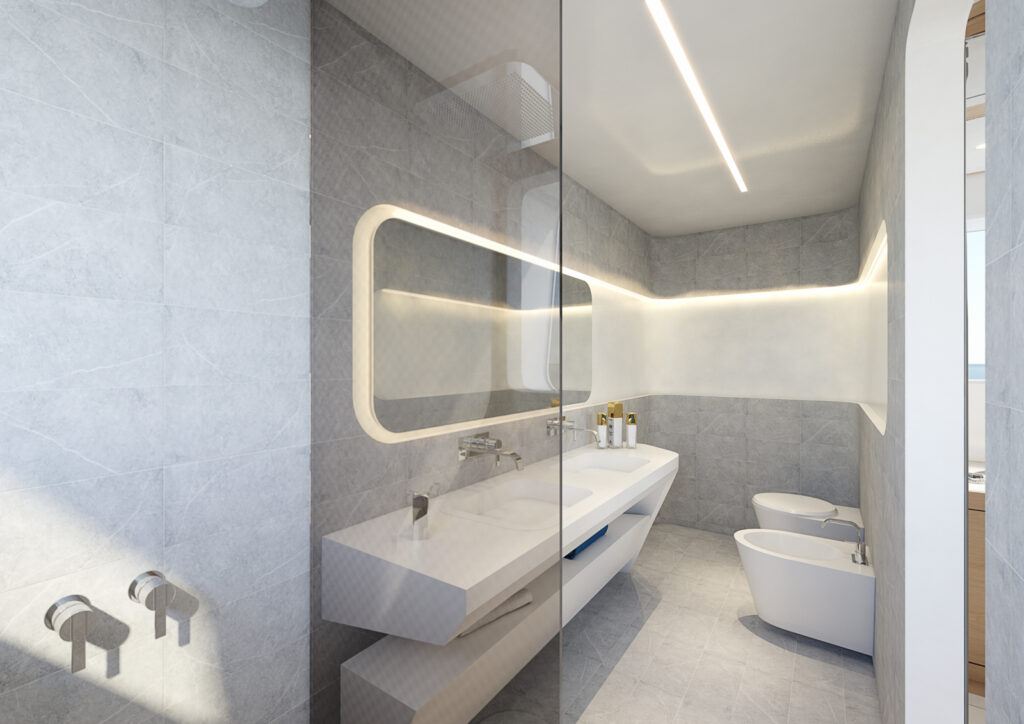
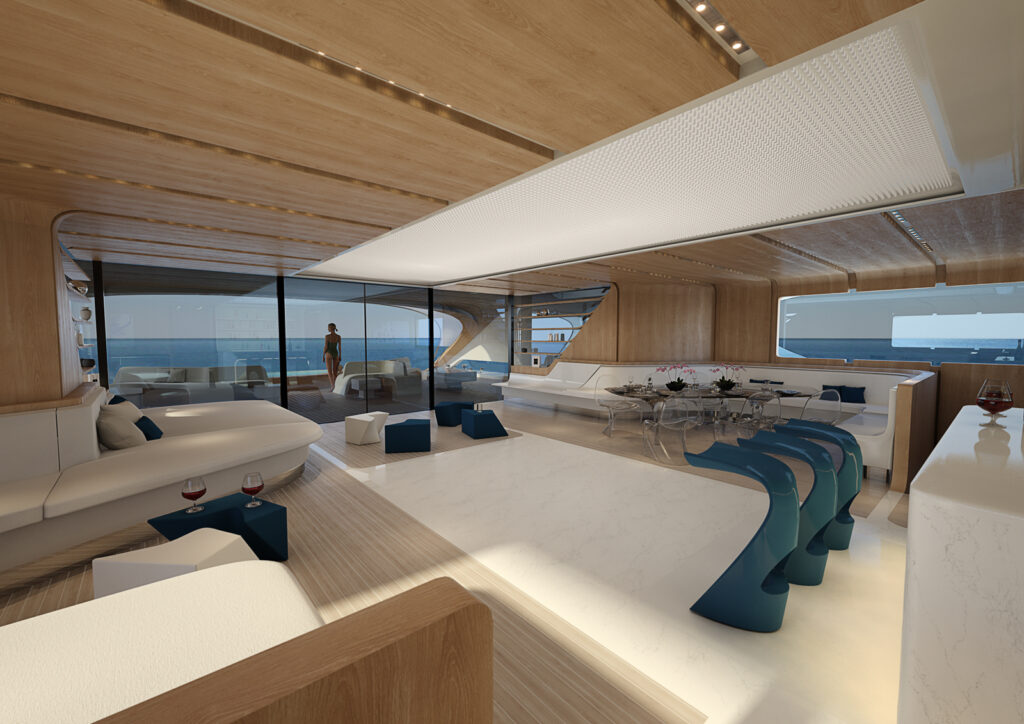
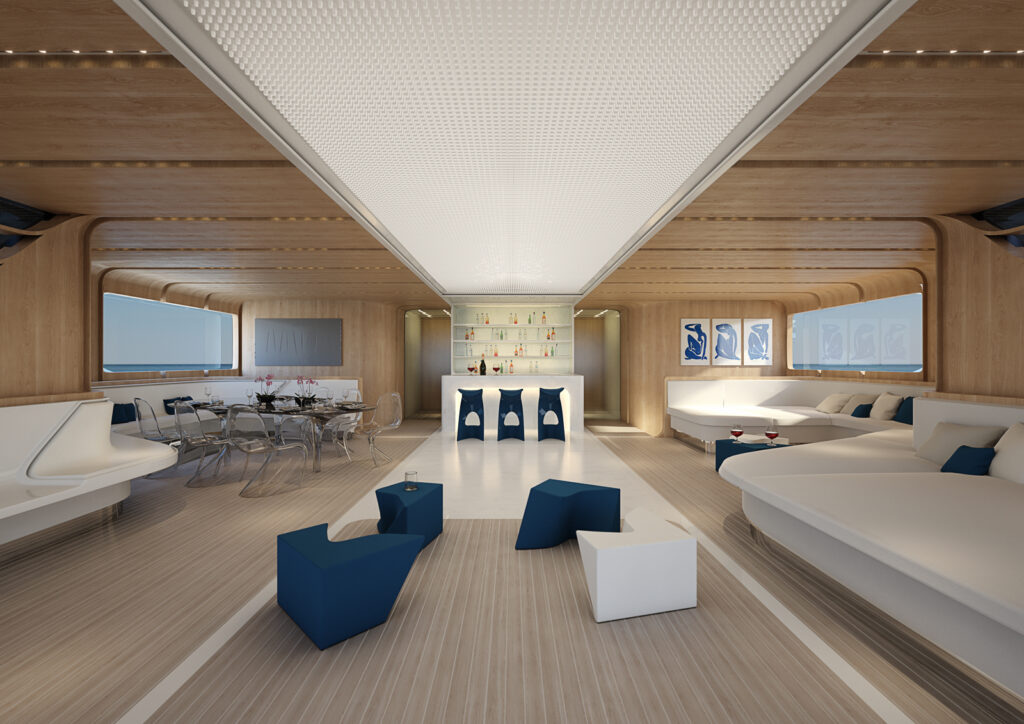
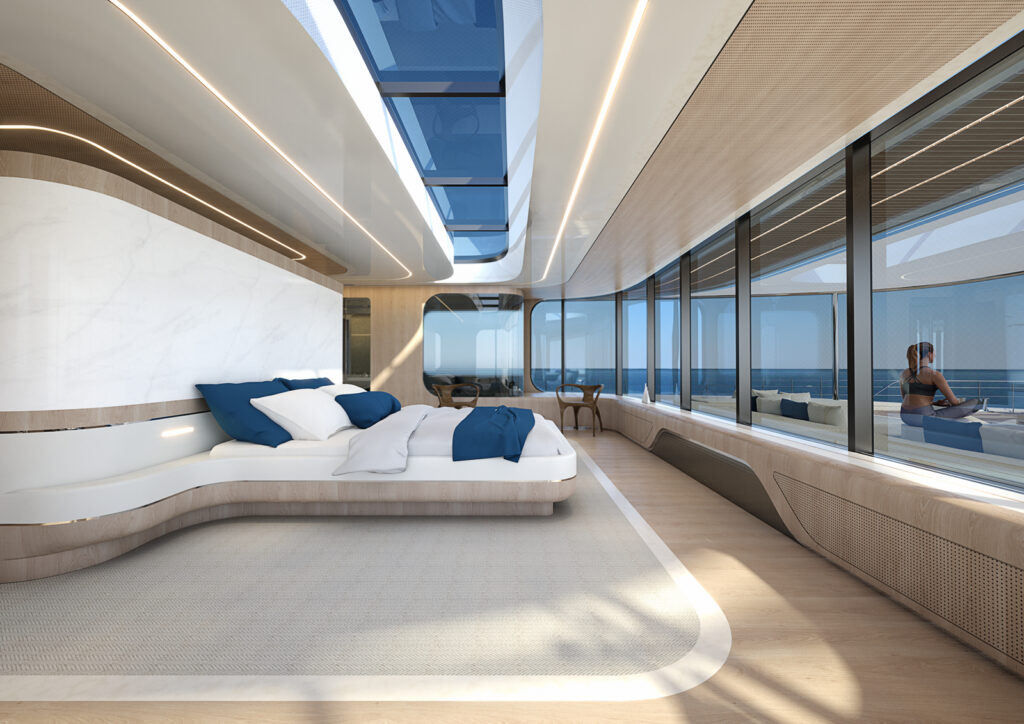
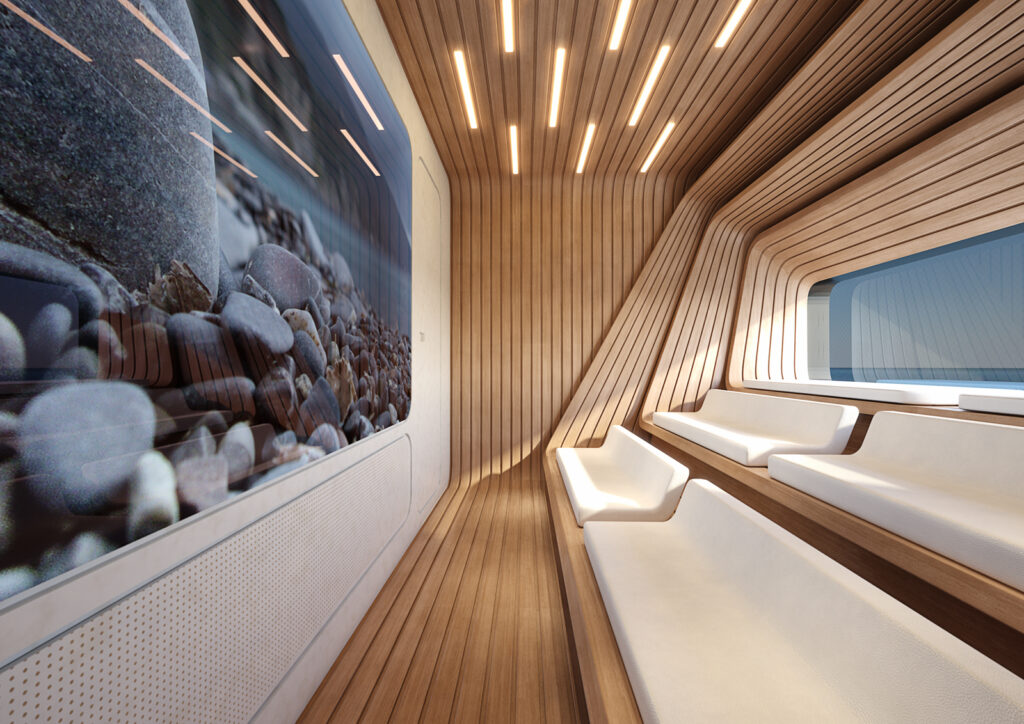
As Rossinavi’s green technology flagship, Oneiric is equipped with three levels of solar panels to allow for fully electric navigation and an AI-managed control centre, which manages energy consumption and ensures the environmental impact is low. Its multihull structure is also more energy-efficient and provides improved hydrodynamic efficiency. In a daily travel scenario, Oneiric can cruise in full-electric mode, while it can spend over 70 percent of the time over the course of a transatlantic crossing in full-electric mode, and the remaining time in diesel-electric mode.
All images courtesy of Rossinavi.
Hydrogen power: Aqua
The stunning 112-metre-long megayacht Aqua is introduced by Netherlands-based Sinot Yacht Architecture & Design. Configured in a five-deck set up, Aqua features a sleek exterior with lines inspired by ocean swells. Under the bubble hood-shaped roof is the wheelhouse affording a 360-degree, uninterrupted panoramic view. What makes Aqua more special is that it is powered by liquid hydrogen. With a range of 3,750 nautical miles, it cruises between 10 and 12 knots and can reach a top speed of up to 17 knots.
Elements of water and circle themes are ubiquitous inside, from circular skylights, mirrors, and dining tables, to the central circular staircase. At the bottom of the spiral staircase, you’ll find circular artwork suggesting the endless ocean depths as a reflection of the eternal skies suspended over the top skylight. Also at the lowest level, two massive liquified hydrogen tanks can be seen behind a giant façade of strengthened glass.

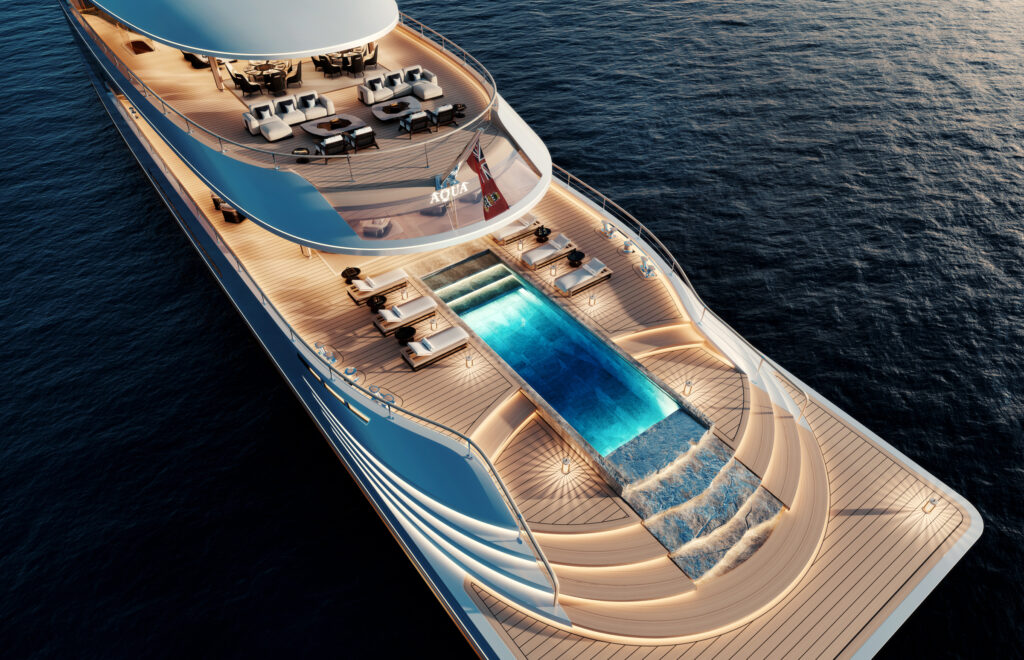
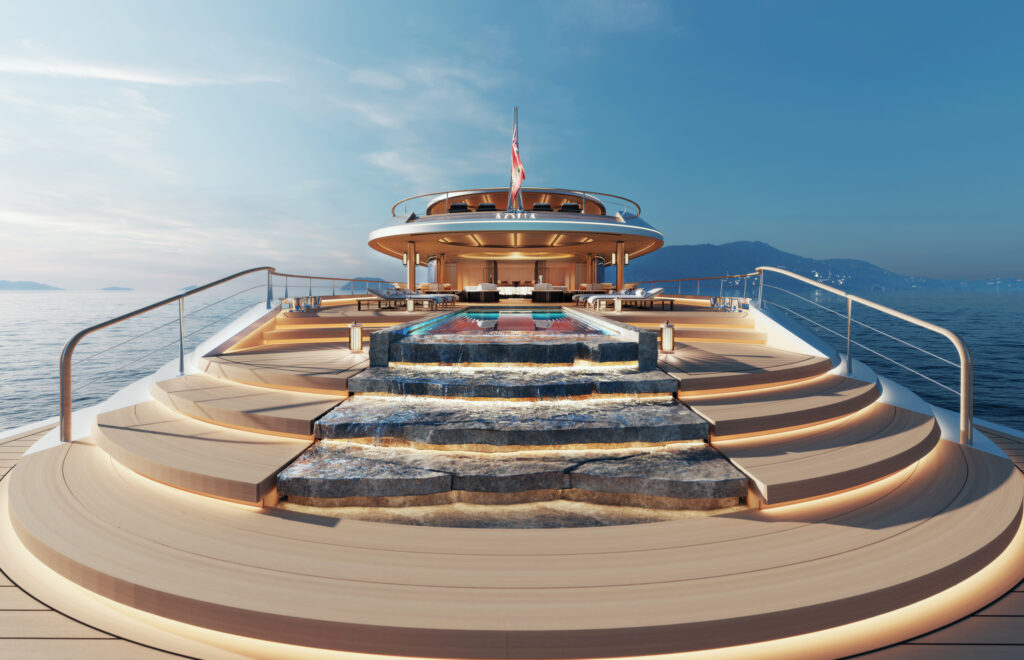
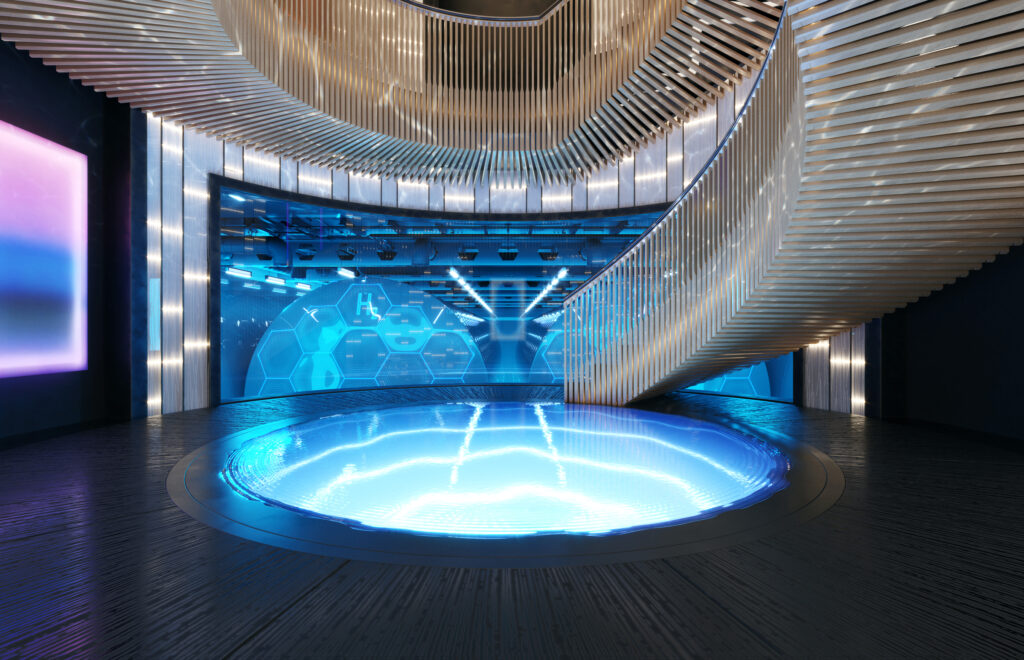



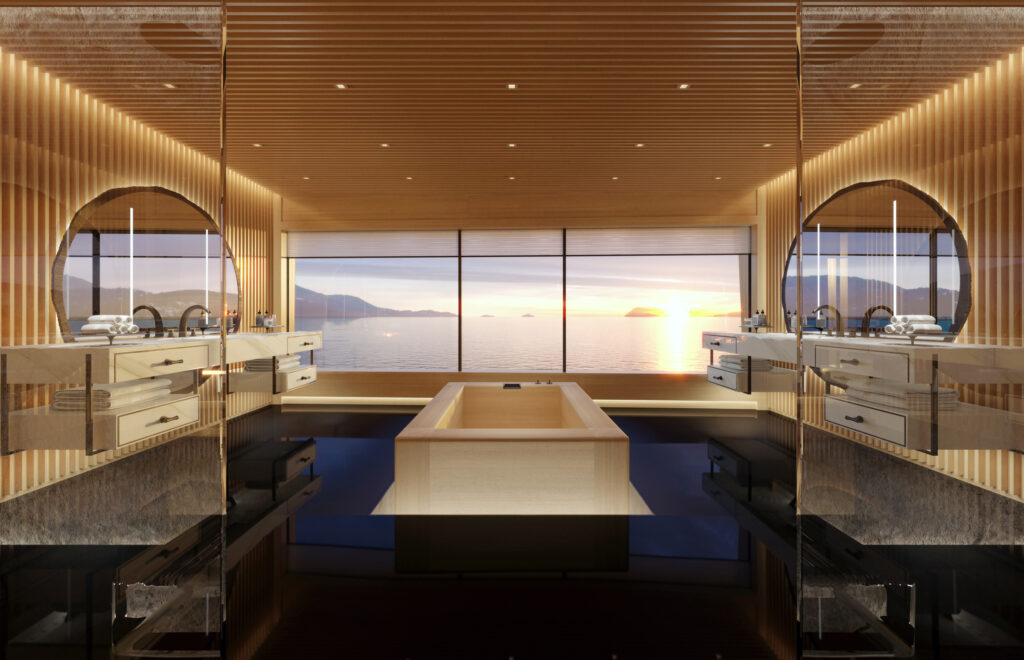
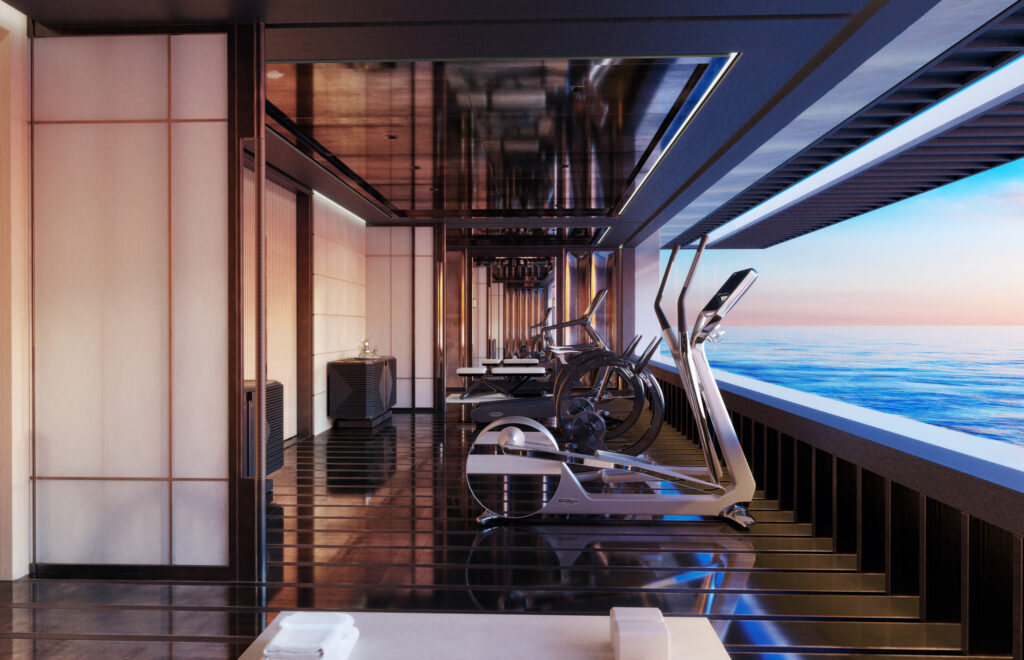
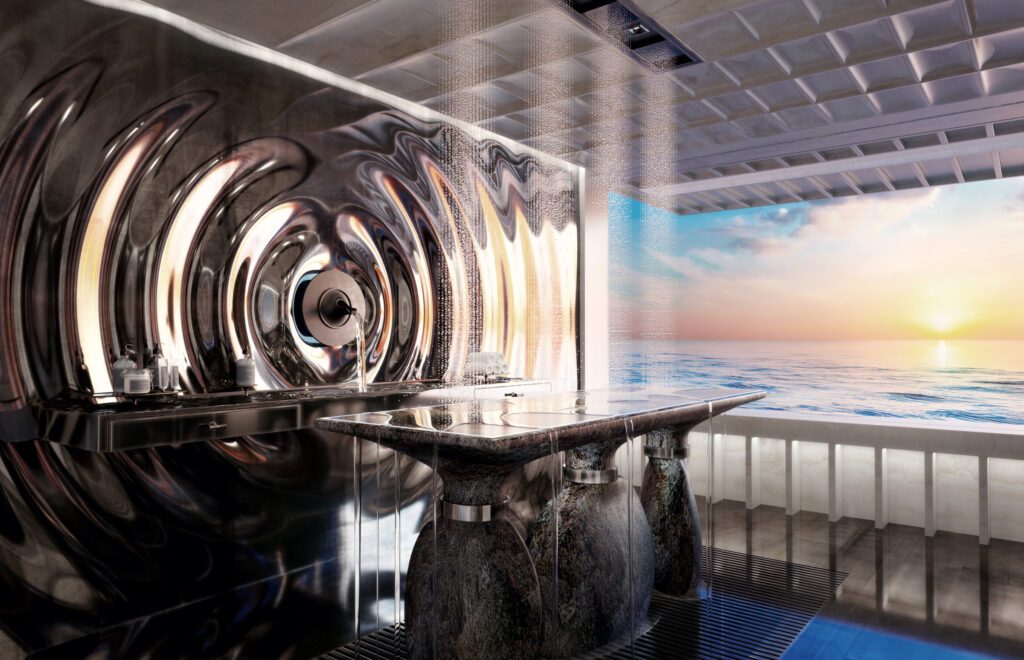
The vessel provides berths for 14 guests across an owner’s pavilion, two VIP cabins, and four guest staterooms. Occupying the front half of the upper deck, the beam-wide owner’s pavilion comes with a large central skylight and an observatory with a floating daybed and floor-to-ceiling windows at the bow.
The VIP cabins and other staterooms feature a minimalist Japanese zen setting with the use of wooden floor, furniture, and screens. Entertainment and wellness options are also aplenty. The indoor health and wellness centre features a fully equipped gym and an exclusive hydro massage room, while the aft deck has an infinity pool with a series of platforms cascading down towards the sea. The upper deck aft can also be transformed into an outdoor cinema.
Images courtesy of Sinot Yacht Architecture & Design.
Hydropower: Baltic 142 Canova
In 2019, Finnish shipyard Baltic Yachts launched Canova, a luxury sailing yacht featuring a hydro-generation design. The 43-metre-long vessel is equipped with a diesel-electric propulsion and hydro-generating system so the reliance on fossil fuels is reduced.
While the yacht is sailing, the freewheeling propeller drives the electric propulsion motor as a generator, which, in turn, charges its six banks of lithium-ion batteries. With this propulsion system, Canova has a cruising speed of 10 knots, while it can reach a top speed of 24 knots. Also, the yacht features a transverse Dynamic Stability System (DSS) foil, which is designed to reduce heel angle, increase speed, and dampen pitching, resulting in further comfort.
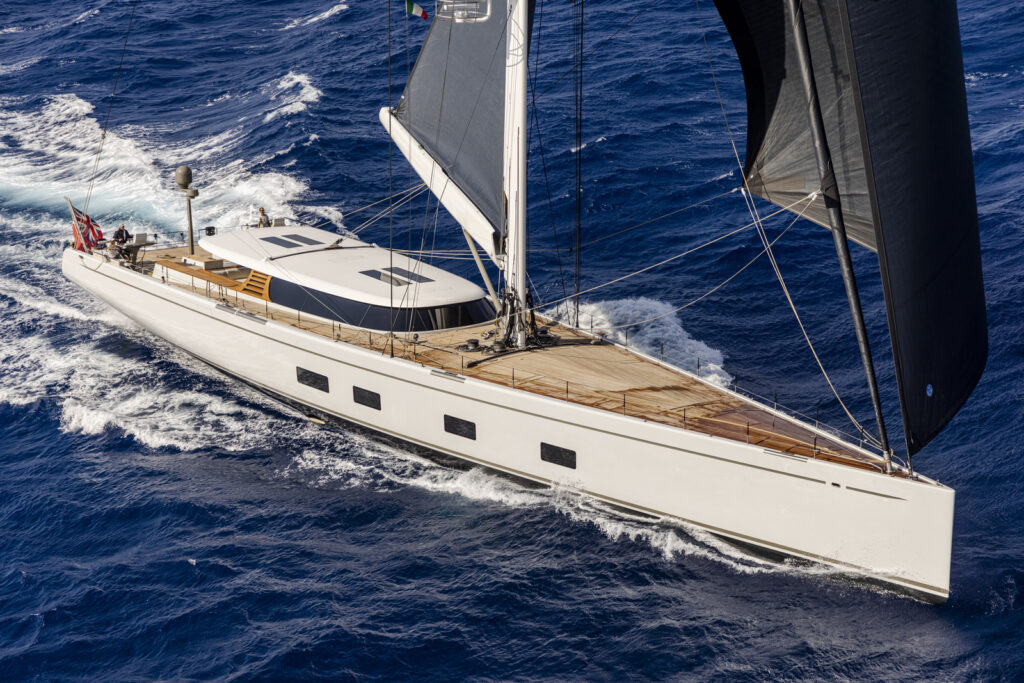
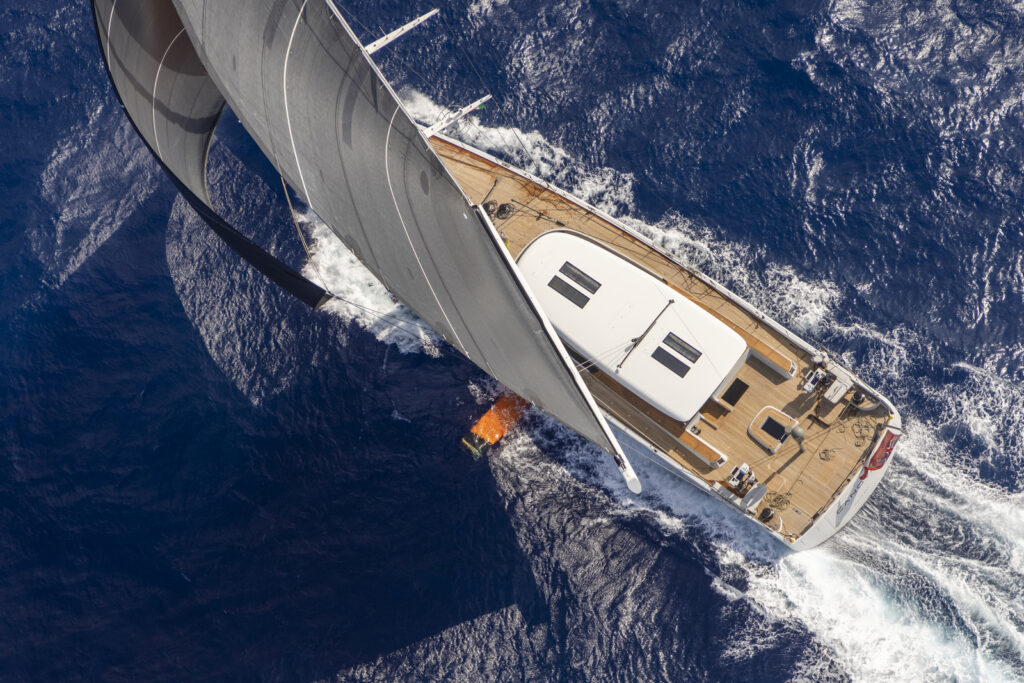
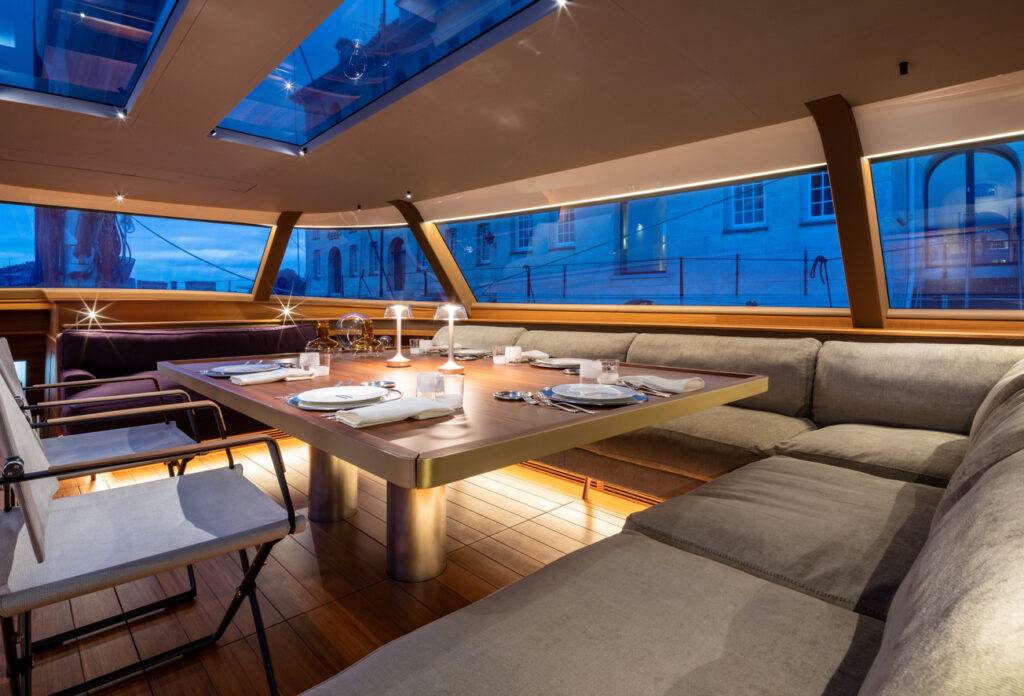
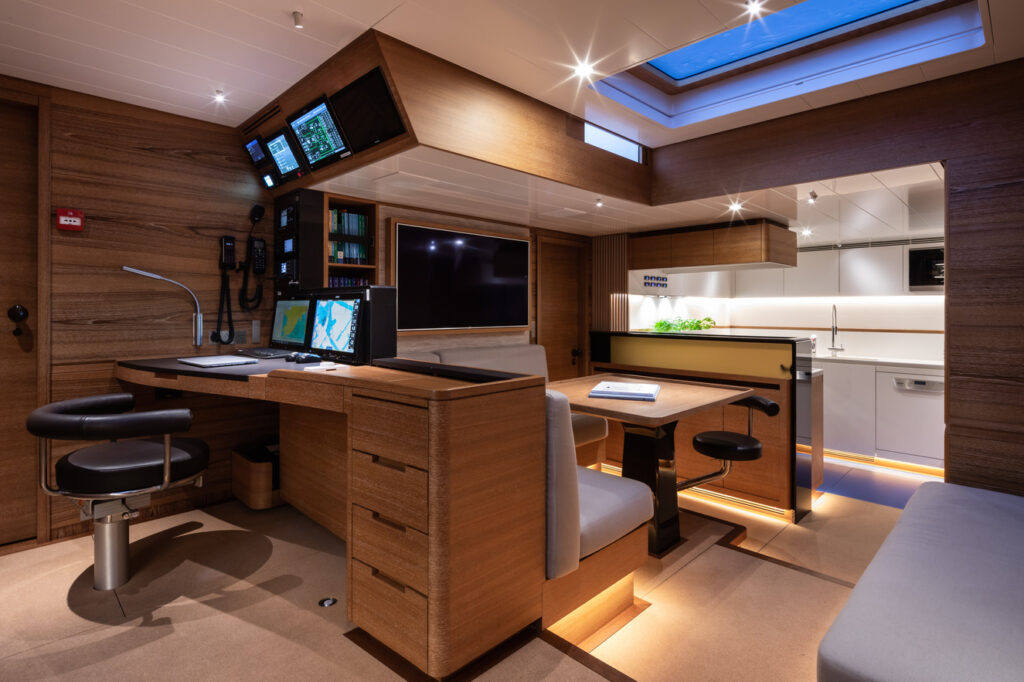

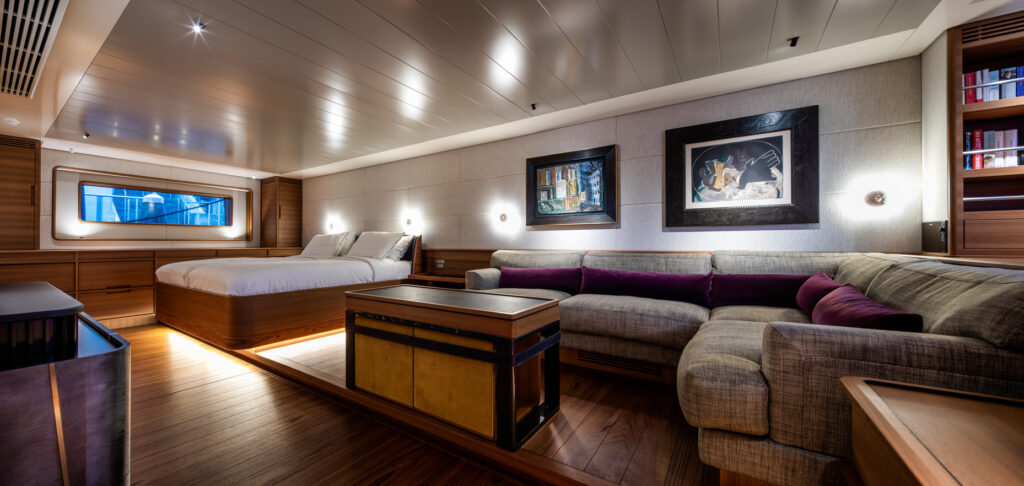
Canova’s long, hardtop bimini, which extends from the deck saloon aft over the guest cockpit, is a key feature of its design. The full-beam owner’s suite located amidships is a spacious 65-square-metre sole space fitted with a double bed featuring a gimballing mechanism, a full-length walk-in wardrobe, and a treadmill installed beneath the lounge area cabin sole.
Images courtesy of Baltic Yachts.
Wind power: 80 Sunreef Power Eco
This 23.8-metre-long, all-electric catamaran is billed by its maker—Poland-based shipyard Sunreef Yachts—as “the world’s most advanced sustainable luxury catamaran.” 80 Sunreef Power Eco is a full-autonomous craft relying on solar, water, and wind power.

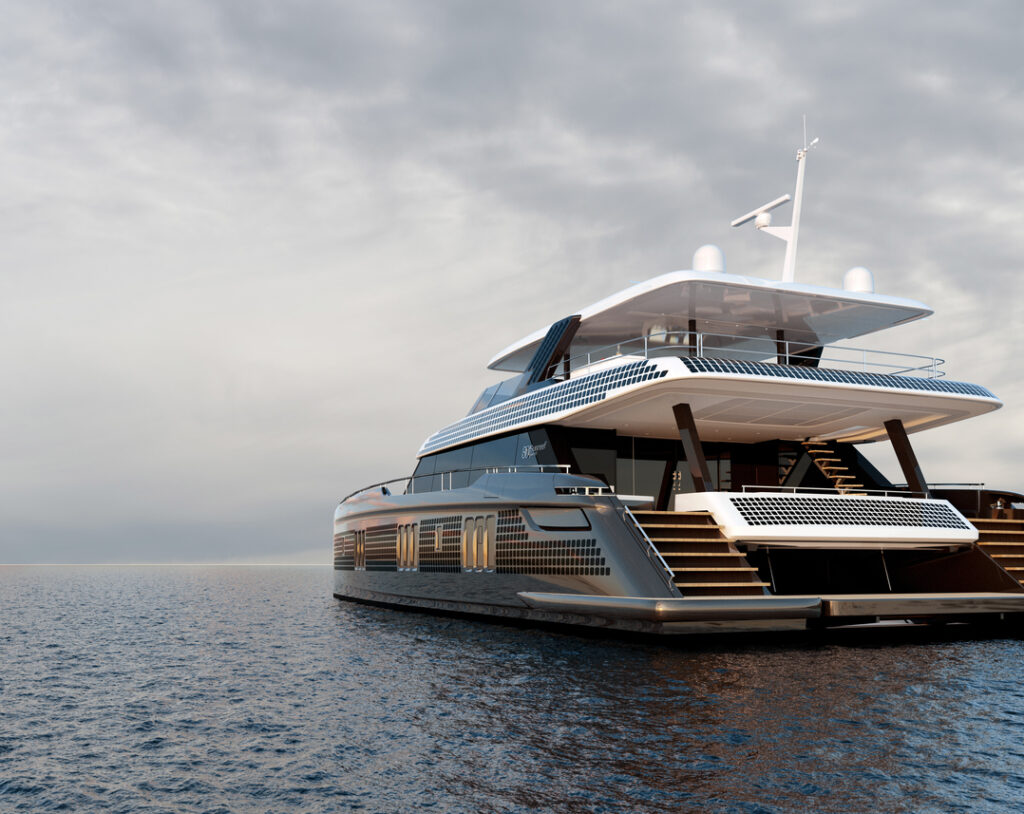
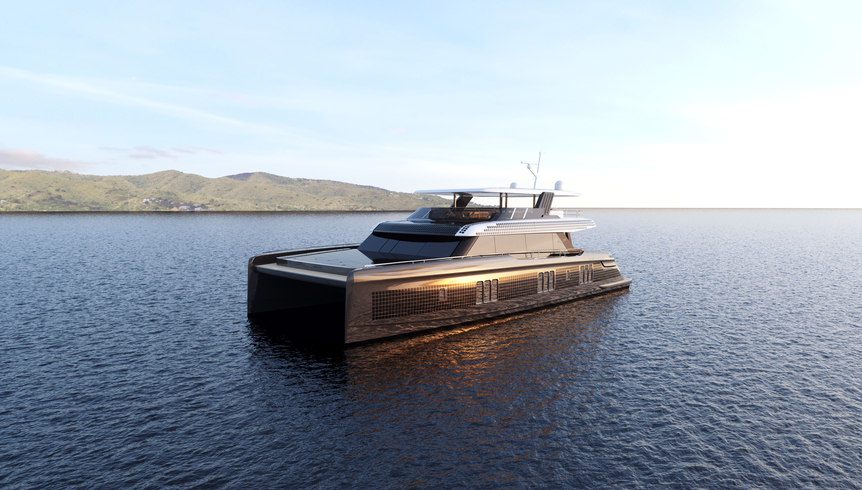
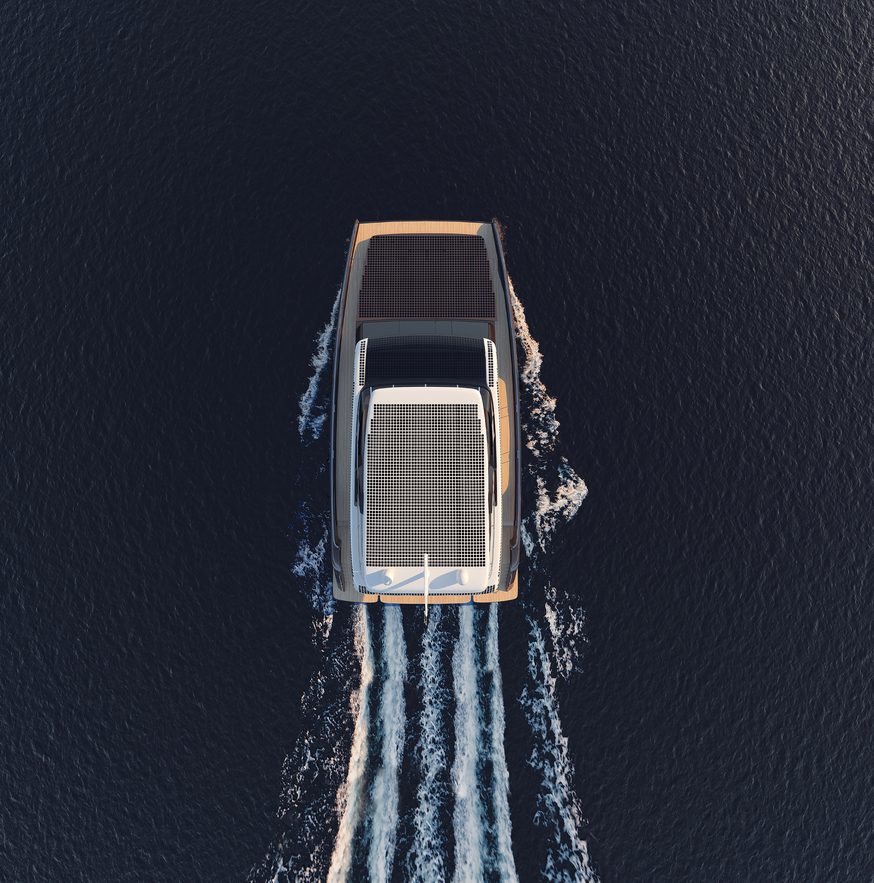
In addition to a hydro-generation system and 200-square-metre ultralight composite-integrated solar panels mounted into the hull sides, mast, superstructure, and bimini roof, the catamaran can be further fitted with a kite for increased performance and autonomy. As a result, even if the weather is not ideal, there are other alternative options available to allow the vessel to provide infinite range.
The yacht comes with a four-cabin layout that can accommodate 10 guests onboard. Other sustainable features onboard include a DC-powered air-conditioning system, a water making and purifying system capable of generating drinking water, a non-toxic bottom paint, and natural composite structures.
Images courtesy of Sunreef Yachts.





